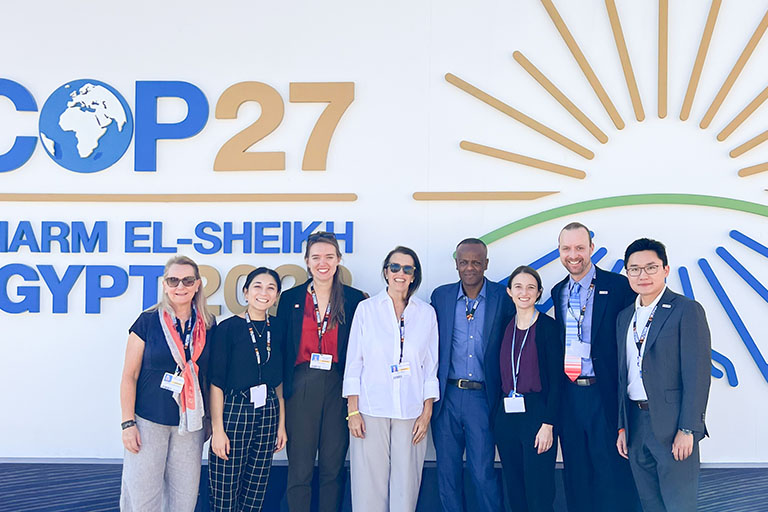-

Hear from Professor Monica Toft
Learn how Professor Monica Toft is shaping the study of global affairs and diplomacy at Fletcher.
Hear from Prof. Toft -

Explore Fletcher academics in action
Fletcher Features offers insights, innovation, stories and expertise by scholars.
Get global insights -
Get application tips right from the source
Learn tips, tricks, and behind-the-scenes insights on applying to Fletcher from our admissions counselors.
Hear from Admissions -

Research that the world is talking about
Stay up to date on the latest research, innovation, and thought leadership from our newsroom.
Stay informed -
Meet Fletcherites and their stories
Get to know our vibrant community through news stories highlighting faculty, students, and alumni.
Meet Fletcherites -

Forge your future after Fletcher
Watch to see how Fletcher prepares global thinkers for success across industries.
See the impact -

Global insights and expertise, on demand.
Need a global affairs expert for a timely and insightful take? Fletcher faculty are available for media inquiries.
Get in Touch
Achieving the Goals of the Paris Agreement will Require Adaptation Financing
In advance of the next UN Climate Change Conference (COP26), Sabrina Rose (F21) evaluates if countries can attract bilateral adaptation finance by including adaptation in their nationally determined contributions.

Sabrina Rose (F21) is a graduate student at The Fletcher School specializing in International Environment and Resource Policy, along with Development Economics. Her research focuses on climate and agricultural policy in developing countries. She will join CGIAR’s Research Program on Climate Change, Agriculture, and Food Security after graduating in May, 2021.
What questions does your research address?
This study evaluates whether or not countries can attract bilateral adaptation finance by including adaptation in their nationally determined contributions (NDCs). NDCs are climate policies that outline each country’s ambition towards achieving the goals of the Paris Agreement. In advance of the United Nations Climate Change Conference in November (COP26), countries are updating their NDCs. Seventy-seven countries have submitted a new or updated NDC as of March 2021. Although parties are only required to report their mitigation efforts in NDCs, many developing country parties also include adaptation.
Still, overall levels of adaptation finance are far below what is sufficient to protect societies from the dangerous impacts of climate change. Global adaptation finance flows were estimated at 30 billion USD in 2017/18. However, adaptation could cost between 140 and 300 billion USD per year by 2030. As adaptation becomes more urgent and costly, calls to scale up adaptation finance will intensify. Developing countries could signal to donors how best to allocate adaption finance according to the needs and priorities described in their NDC.
What are the primary findings?
On average, countries that included adaptation in their first NDC received approximately 59 percent more bilateral adaptation finance compared to countries that did not include adaptation in their NDC. This result was estimated using a difference-in-differences model. Although this result is not statistically significant due to low statistical power from the small size of the control group, there are potential policy implications.
NDCs are highly visible climate policies that receive international attention. Developing countries may be able to use NDCs strategically to communicate their needs for adaptation finance and demonstrate their capacity to effectively manage adaptation finance. This research is especially relevant now, because countries are preparing to submit their revised NDC with increased ambition that will likely require increased finance. Developing countries can leverage this insight to design NDCs that effectively communicate their climate mitigation and adaptation ambitions with the additional goal of attracting more adaptation finance.
Publication:
https://www.climatepolicylab.org/publications

